«Included in the Arms and Armor: Notable Acquisitions 2003–2014exhibition, curated by Donald J. La Rocca and currently on display in the galleries of the Department of Arms and Armor though December 6, are several printed designs associated with ornamental firearms. Upon acquisition, two of these prints—the decorative title page from the album Plvsievrs Pieces et Ornements Darquebuzerie, acquired in 2011, and a design for the stock of a musket from the Nouveavx Desseins D'Arquebvseries, acquired in 2013—appeared similarly stained and damaged, but underwent distinctly different conservation campaigns. The two prints, as well as all of the other works on paper currently on display, will be on view through March 2015, due to their preservation needs.»
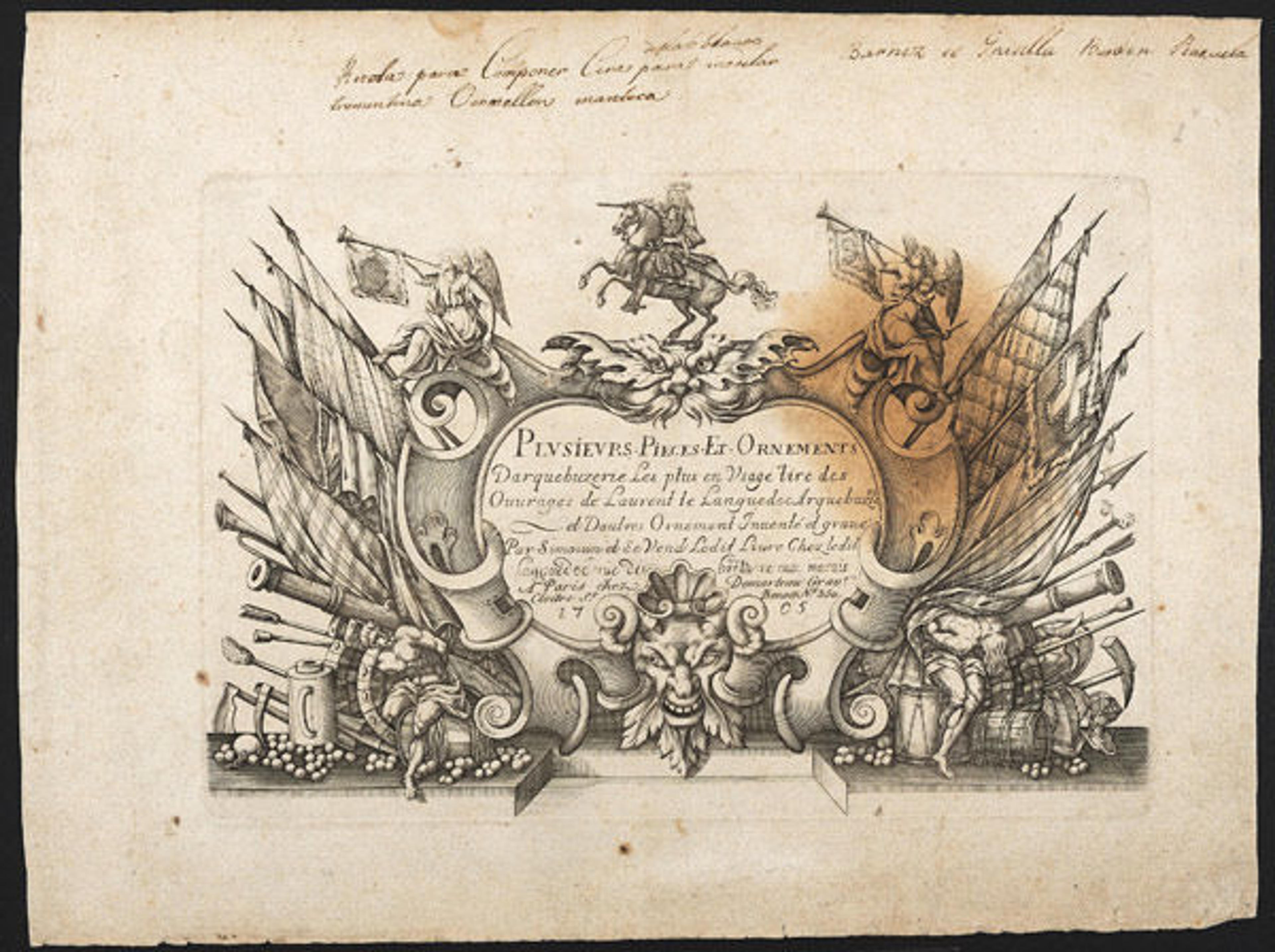
The title page from Plvsievrs Pieces et Ornements Darquebuzerie as it was acquired. Plvsievrs Pieces et Ornements Darquebuzerie (4th extended edition), ca. 1776. French, Paris. Ink on paper; 9 1/2 x 12 3/4 in. (24.1 x 32.4 cm) to 9 1/4 x 14 in. (23.5 x 35.6 cm). The Metropolitan Museum of Art, New York, Purchase, Kenneth and Vivian Lam Gift, 2011 (2011.310.1)
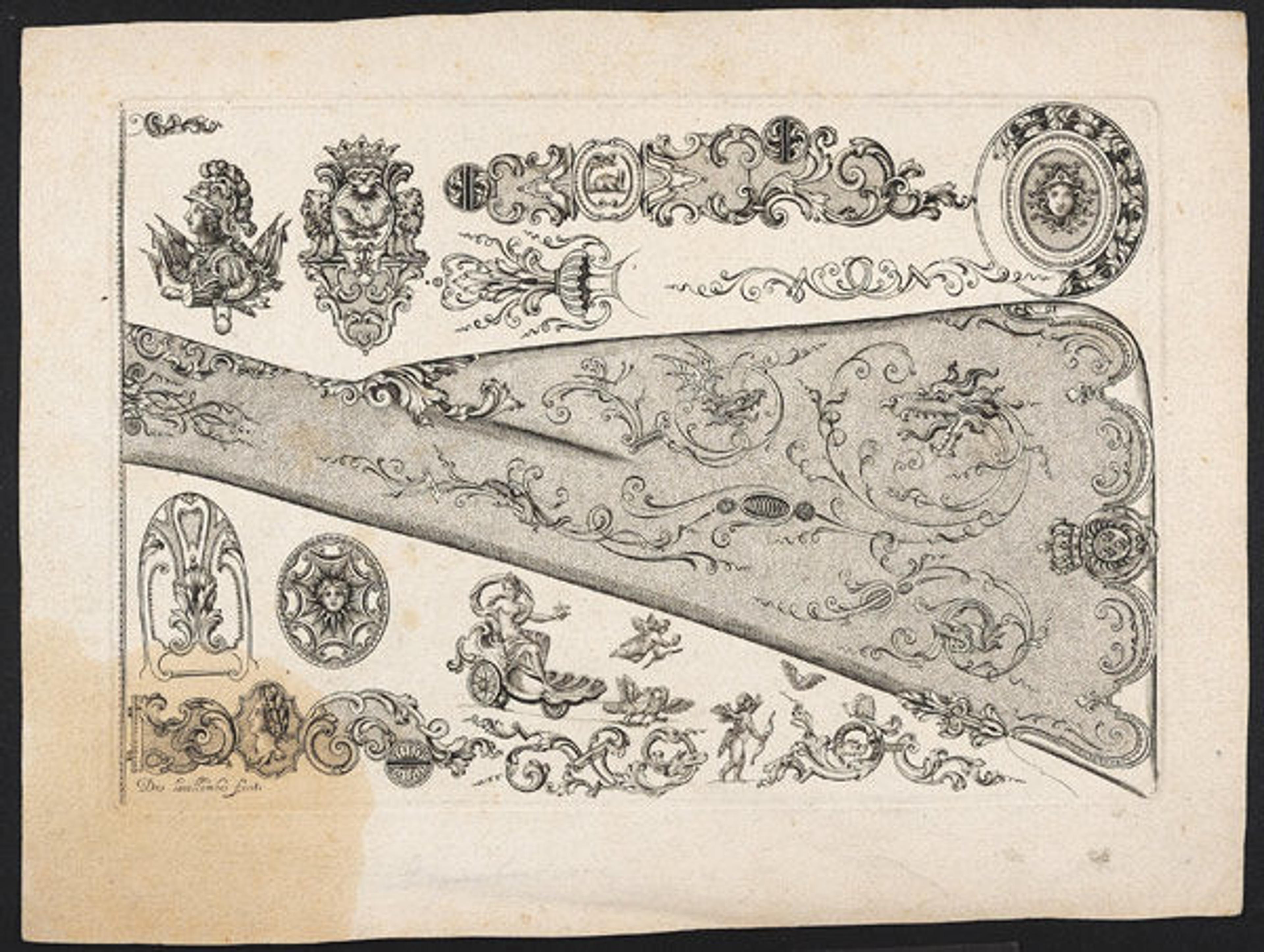
The design for a musket stock from Nouveavx Desseins D'Arquebvseries as it was acquired. Print from Nouveavx Desseins D'Arquebvseries, ca. 1705–30. French, Paris. Ink on paper; 11 x 8 1/4 in. (27.9 x 20.9 cm). The Metropolitan Museum of Art, New York, Purchase, Bequest of Stephen V. Grancsay, Rogers Fund, Helmut Nickel Gift, and funds from various donors, by exchange, 2013 (2013.907)
The title page of Plvsievrs Pieces et Ornements Darquebuzerie is by Claude Simonin and the musket stock design is by De Lacollombe—both French engravers active in Paris during the 1680s to 90s and from 1702 to 1736, respectively. Printed impressions of their exquisite designs, dispersed throughout Europe, inspired craftsmen and collectors and were instrumental in popularizing the fashion of ornamental firearms.
The title page of the Plvsievrs Pieces et Ornements Darquebuzerie album exhibits evidence of bench use in an active gunsmith's workshop. The sheet has been annotated in Spanish (in pen and ink along the top edge—shown above), and the large brown stain in the image area, as well as the soiled edges of the sheet, indicate heavy handling in what was probably a bustling Spanish workshop where ornamental pieces for firearms were shaped and skillfully engraved. In overall and microscopic examination, the stain appears to be oil-based. Oil is a critical component of both gun making and the engraving and printing process; since the stain was likely caused while the piece was in active use, it was determined that it should remain as evidence of the artwork's unique history and use.
The design for the stock of a musket from Nouveavx Desseins D'Arquebvseries also exhibited a large brown stain when it was acquired. In contrast to the title page, however, the print did not have any indications of workshop use—rather, the stain appears to have been caused by accident, completely unrelated to the intended function of the artwork. For this reason, it was determined that the stain should be reduced.
A variety of materials, including specific combinations of ammoniated water, organic solvents, bleaching agents, and chelating agents (which, as an aside, are fascinating chemical compounds named for the Greek word chēlē, meaning "claw," since they target and grip on to the metallic components of a material) were tested on the stain in an effort to both identify and remove whatever had caused it. In the end, a chelating solution proved the most effective in reducing the discoloration, indicating that there were metallic components in the material that had caused the stain. The stained area was effectively cleaned on a suction platen (a type of vacuum surface often used in paper conservation), which ensured a controlled application of the chelator.
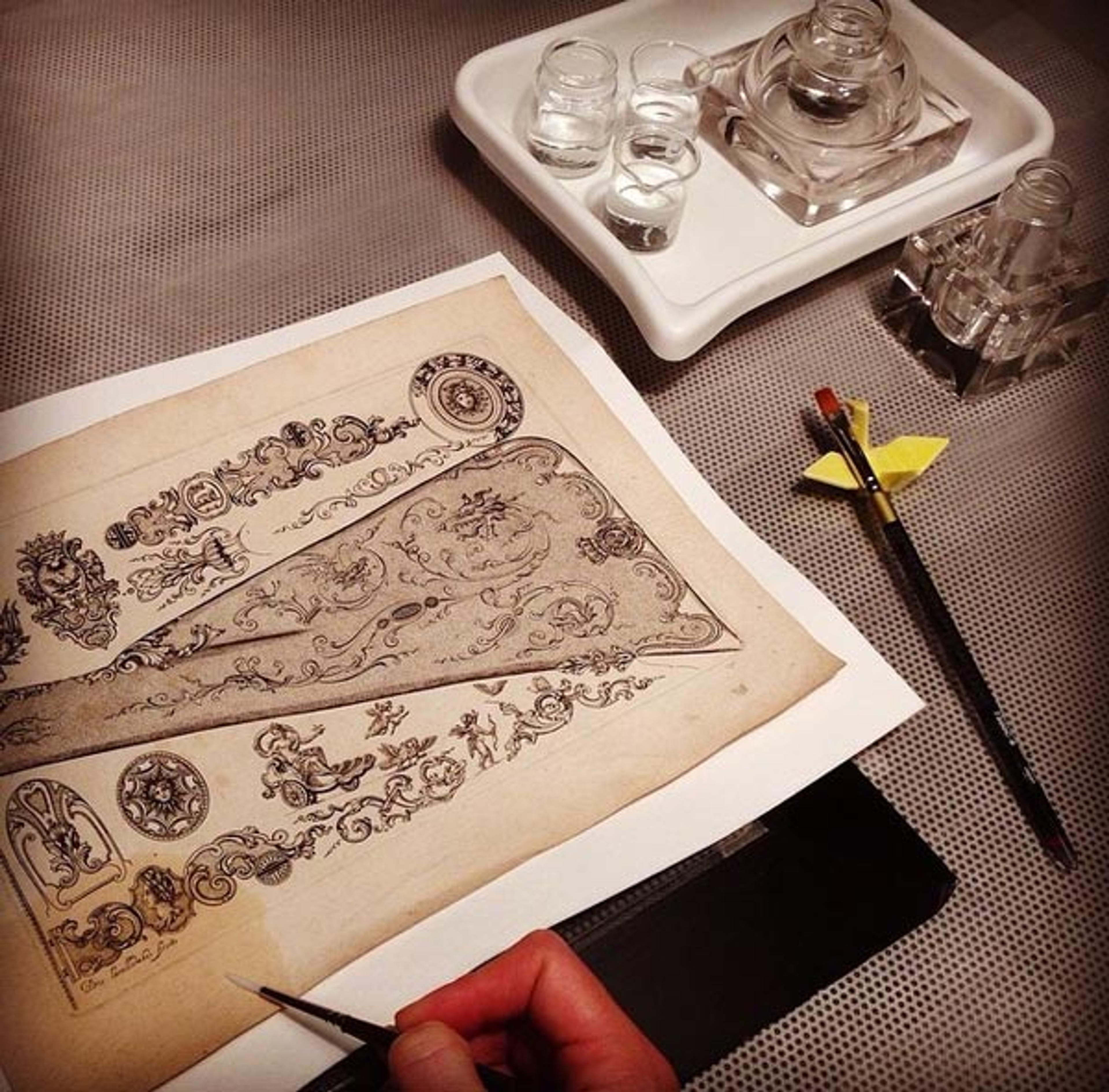
The musket stock design (2013.907) being treated on the suction platen. Photo courtesy of the author
After the stain had been reduced on the musket stock design and both prints had been matted by the Museum's senior manager for installation and matting, Martin Bansbach, they were ready to be displayed for the very first time.
The creation of these prints was the result of close cooperation between printmakers and gun makers. Similarly, the conservation treatment and exhibition of the prints today was brought about by the close working relationship between conservators and curators here at the Met.
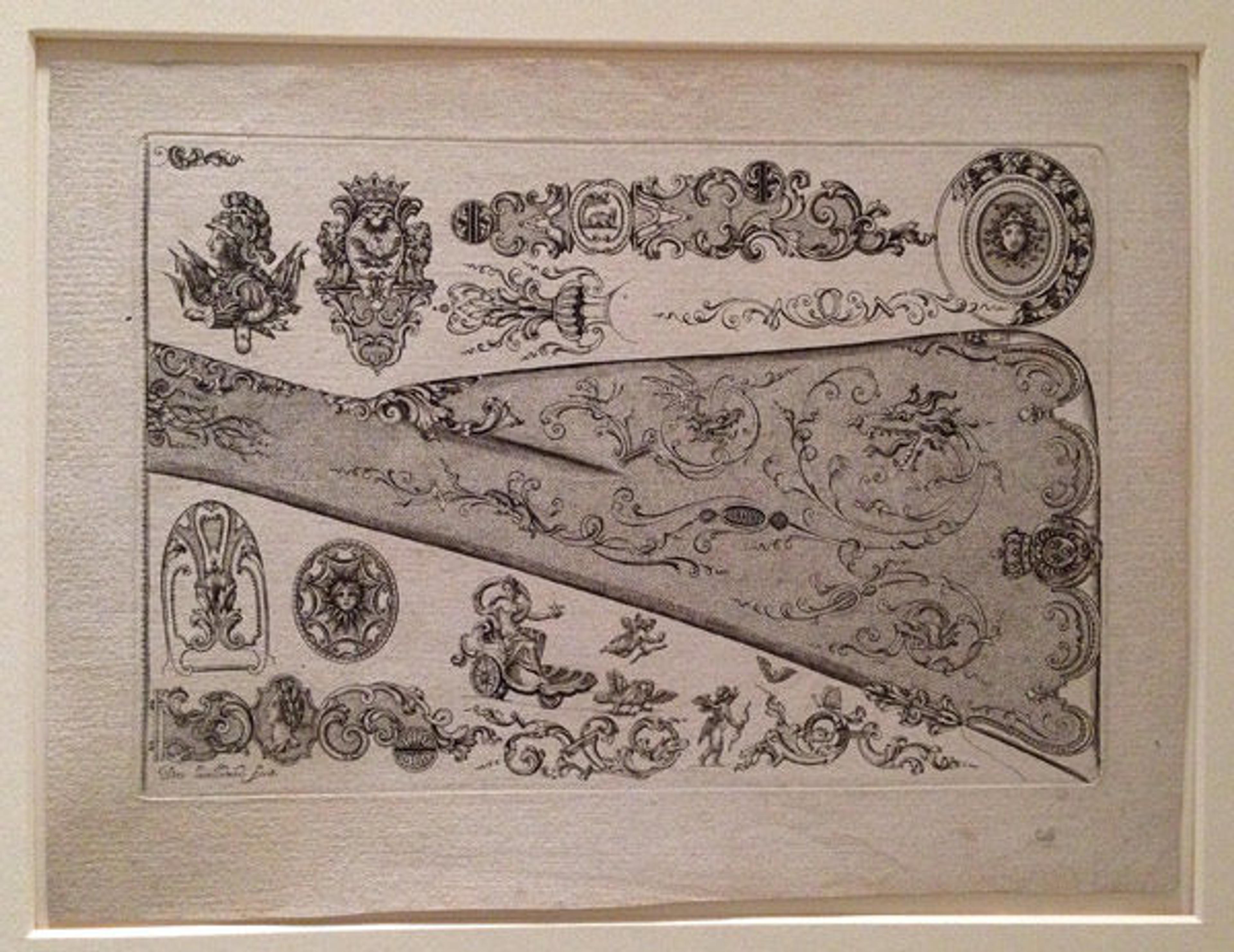
The musket stock design (2013.907) on display after treatment
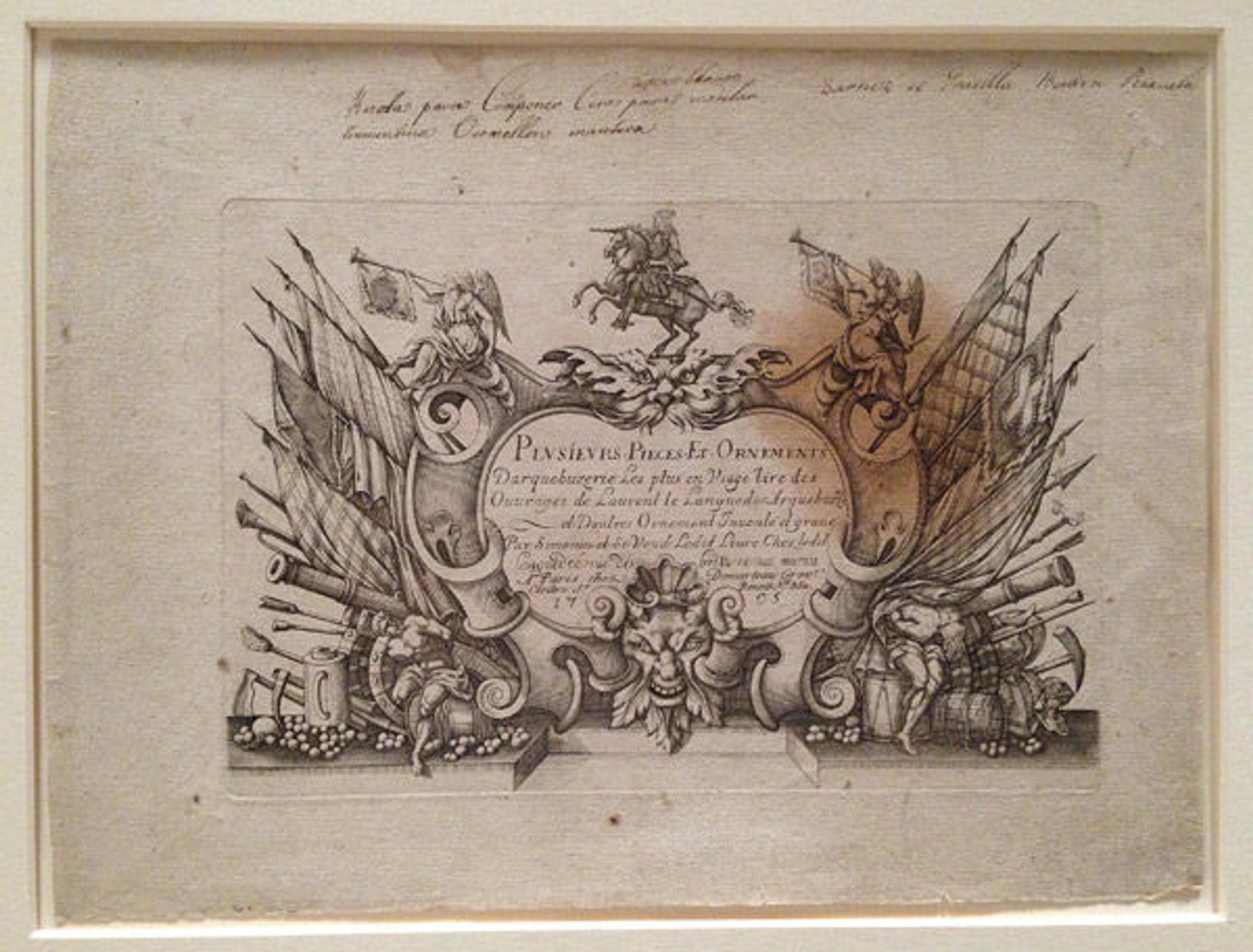
The title page (2011.310.1) on display